Red Bee Balm: Comprehensive Guide to Cultivation and Benefits
Want to plant a real stunner in your garden?
Enter the red bee balm, the botanical equivalent of a firecracker, with its explosion of vivid, red blooms that’ll make your green space pop!
Now, as someone who’s had their hands in the dirt more times than I can count (seriously, I’ve got the tan lines to prove it), I’ve seen a lot of plants come and go.
But few can strut their stuff quite like red bee balm.
This showstopper’s got pizzazz, allure, and, let’s be real, it’s the garden drama queen we all secretly love.
Ready to paint the town (or at least your garden) red?
Stick with me as we look deep into the radiant world of red bee balm, from its flamboyant flowers to its magnetic pull on pollinators.
About Red Bee Balm
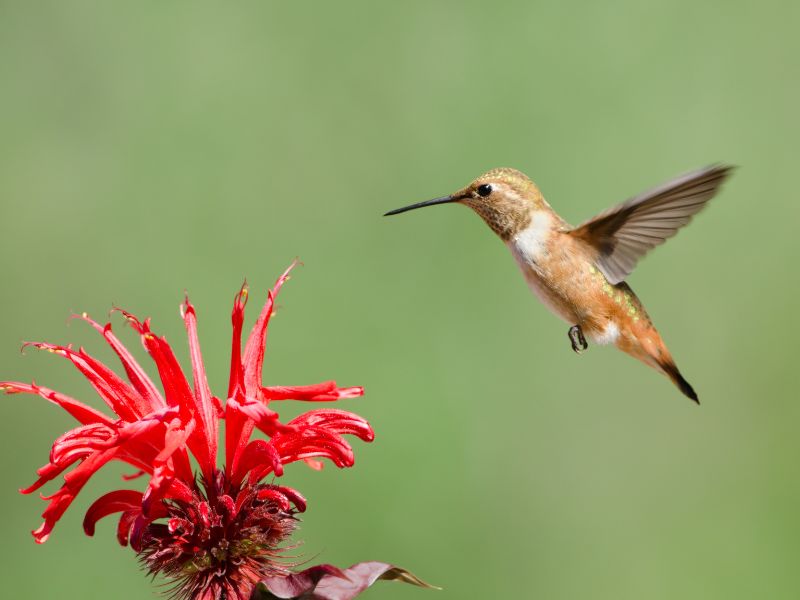
Red Bee Balm, scientifically known as Monarda didyma, is a perennial wildflower native to North America and belongs to the Lamiaceae family.
This attractive plant is known for its bright red flowers that bloom from late spring to early summer, creating an eye-catching display in your garden.
As you grow Red Bee Balm in your garden, you’ll find it brings more than just visual appeal.
This here beauty of a plant is known for attracting bees, butterflies, and hummingbirds, which not only add to the beauty of your garden but also play a vital role in pollination.
Plus, the flowers have a crown-shaped appearance, making them an interesting conversation-starter.
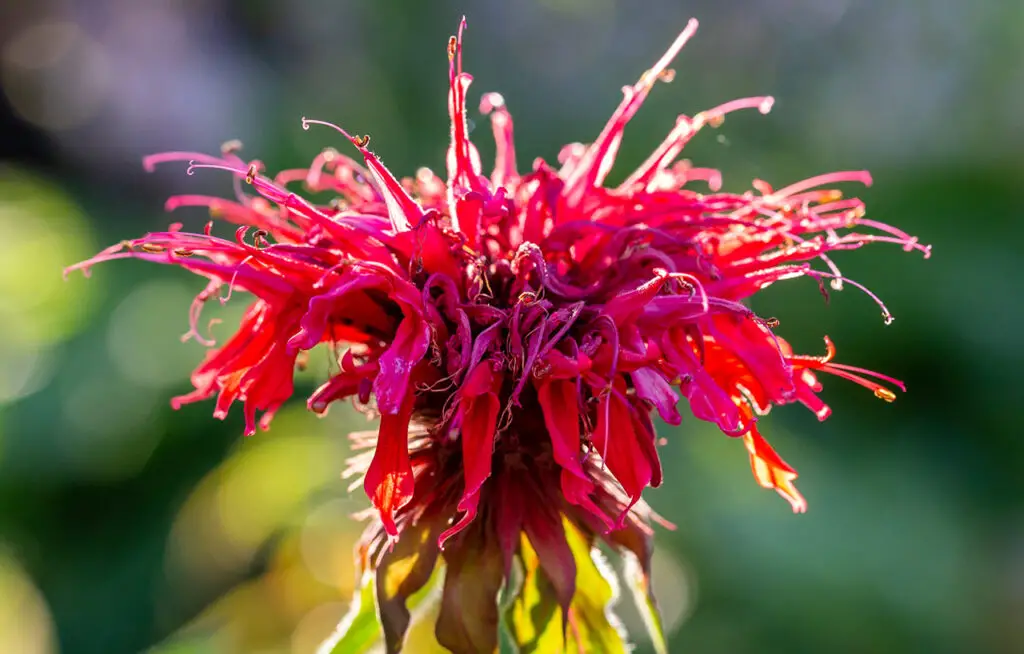
To successfully grow Red Bee Balm, ensure you provide it with well-draining soil and full sunlight exposure.
Keep in mind that this plant prefers moist-to-medium soil conditions.
For optimal growth, it’s important to amend the soil with compost at planting time.
This will provide the necessary nutrients for strong stems and healthy flowers.
The Red Bee Balm plant can grow between 2-4 feet tall and features oval leaves with a downy texture on the undersides.
As a somewhat weedy plant, it’s essential to provide some care, such as regular pruning and deadheading, to help maintain its shape and appearance.
Types of Red Bee Balm
There are several varieties of red bee balm that you can consider for your garden.
These plants, belonging to the Monarda genus, are not only known for their beautiful red flowers but also for their ability to attract pollinators like bees, butterflies, and hummingbirds.
Let’s take a closer look at some of the popular red bee balm varieties.

Monarda Didyma is a striking red bee balm with rich, red, fluted spider-like flowers.
This native perennial brings long-lasting color from mid-summer through late summer, and is perfect for planting in the back of a perennial garden to complement smaller flowers.
Monarda Fistulosa, also known as Wild Bergamot, is another popular red bee balm variety.
While it typically has lavender, pink, or white flowers, there are cultivars with red blooms as well.
Wild Bergamot thrives in full sun or partial shade and prefers moist, well-drained soil.
Scarlet Bee Balm is a vibrant variety known for its brilliant red tubular flowers.
This eye-catching plant attracts pollinators and adds a pop of color to your garden from mid-summer to early fall.
It grows well in full sun and moist, well-drained soil.
Monarda Bradburiana is a red cultivar that produces numerous flowers with pink-to-lavender petals and a deep red center.
This bee balm variety is a shorter plant, growing up to 2 feet tall, and is an excellent option for smaller gardens or borders.
Monarda spp refers to the various species within the Monarda genus, which includes all the red bee balms mentioned above.
These plants generally do well in full sun or partial shade and prefer moist, well-drained soil.
They are also known for their fragrant foliage, which can add an aromatic touch to your garden.
Planting and Care
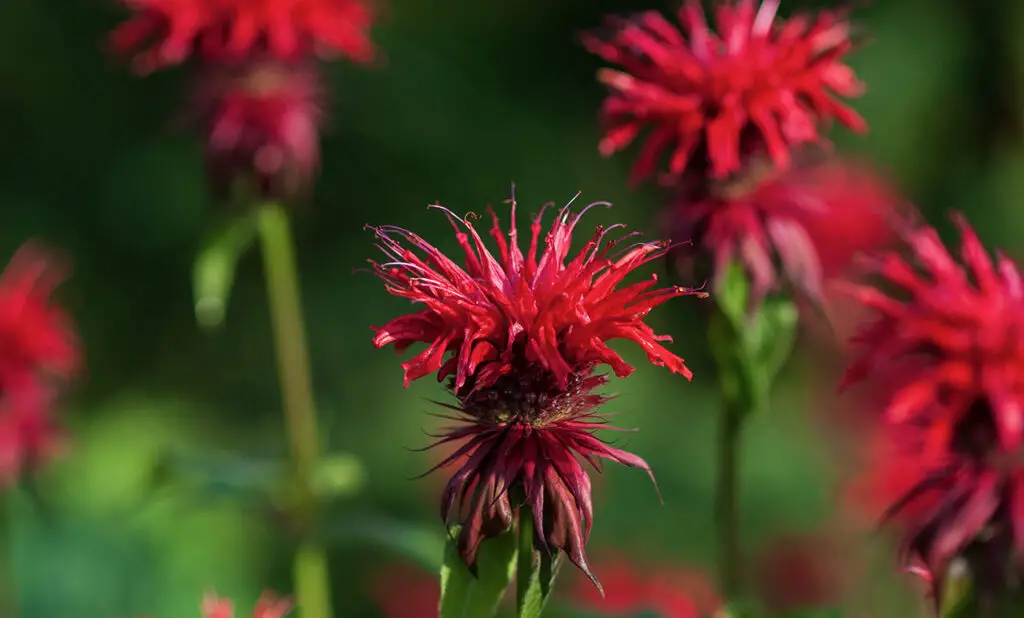
When planting your red bee balm, choose a location with full sun to partial shade.
This plant thrives in a well-drained area with moist soil.
While red bee balm can tolerate some shade, giving it as much sunlight as possible encourages richer blooms.
Before planting, enrich the soil with compost to ensure it’s rich and fertile.
A high-quality soil is crucial for strong stems and healthy flowers.
Add a layer of organic matter, such as compost or well-rotted manure, to give your bee balm a great start.
Space your red bee balm plants about 4 feet apart to provide enough room for them to grow and flourish.
Allow for proper air circulation to help prevent any mildew problems.
Bee balm’s susceptibility to powdery mildew may require additional care; however, selecting mildew-resistant varieties can aid in avoiding this issue.
Keep the soil consistently moist, as red bee balm prefers damp conditions for optimal growth.
Be mindful not to overwater, as soggy soil can lead to root rot.
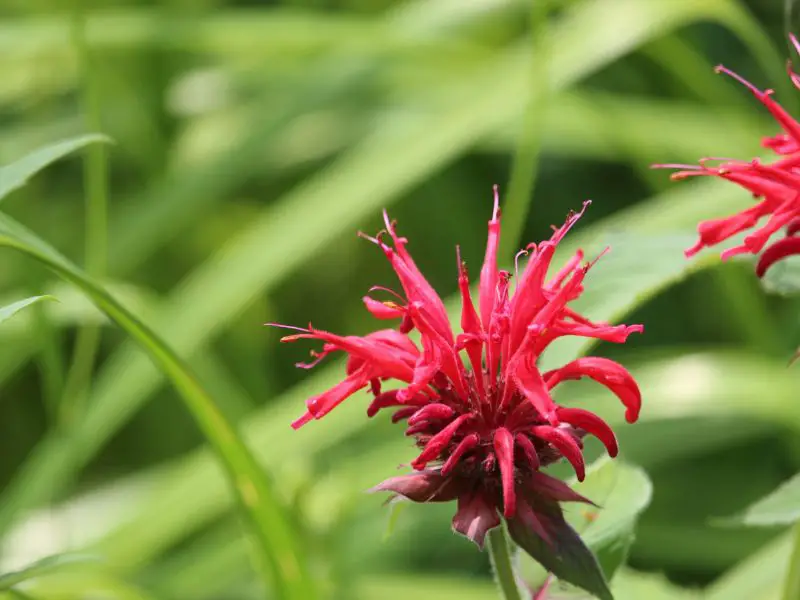
A layer of mulch around the base of your plants can help retain moisture while also suppressing weeds.
Fertilize your red bee balm with an all-purpose fertilizer according to the manufacturer’s recommendations throughout the growing season.
Feeding your plants ensures they receive the necessary nutrients for healthy growth.
Monitor your red bee balm for any signs of pests or diseases, and address any issues promptly.
Frequent pruning can help maintain your plants’ shape and encourage more blooms.
Deadhead spent flowers to extend the blooming period and keep your plants looking tidy.
Propagation Techniques
When propagating red bee balm, you have two main options: using seeds and dividing the plant.
In this section, we’ll explore both methods, providing you with the knowledge you need to successfully propagate your red bee balm.
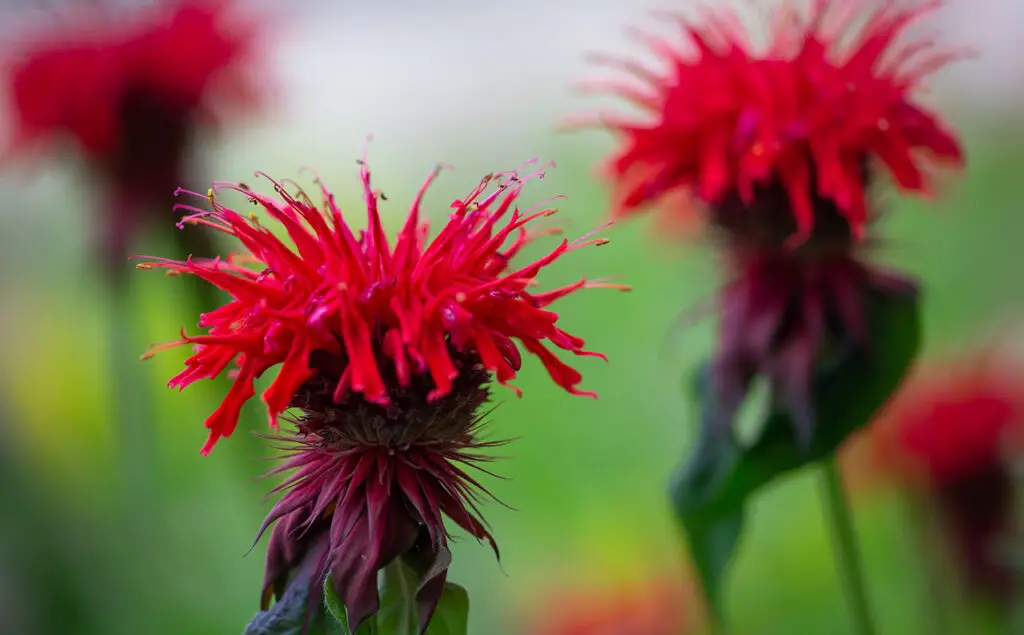
Using Seeds
Start by collecting seeds from a mature red bee balm plant. In early spring, prepare a suitable potting mix and sow your seeds indoors.
Ensure the pot has proper drainage, and keep the soil moist throughout the germination process.
It may take about 4-6 weeks for seeds to germinate.
After the danger of frost has passed, you can transplant your seedlings outdoors.
Be sure to harden them off gradually to avoid shock.
Space the seedlings at least 18-24 inches apart to allow for adequate airflow and growth.
Dividing The Plant
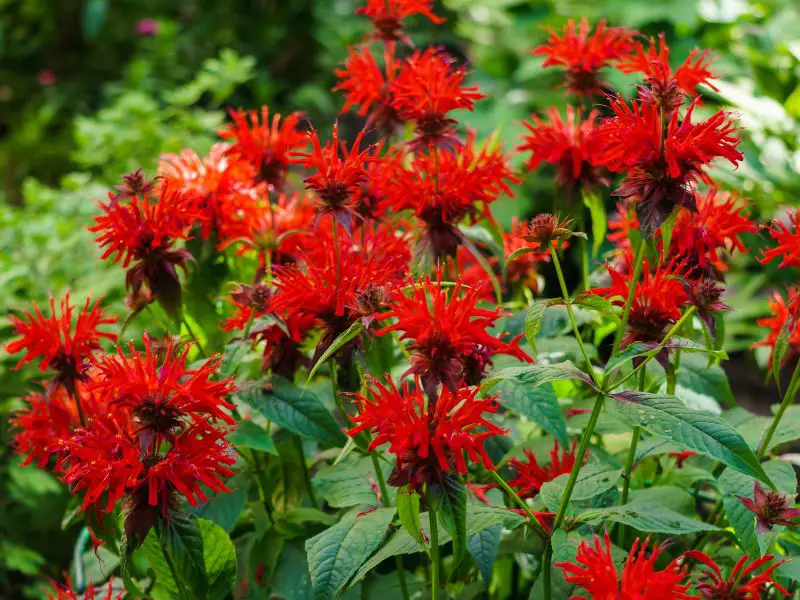
Dividing your red bee balm is best done in early spring or late fall.
This method involves separating an established plant into smaller sections, each with their own root system, and transplanting them to their new locations.
To divide your plant, carefully dig up the parent plant, taking care to preserve as many roots as possible.
Gently separate the plant into smaller sections using your hands or a gardening tool.
Ensure you have adequate soil and suitable planting areas prepared for the new divisions.
Transplant the divisions into their new locations, keeping them at the same soil level as they were in their original position.
Water them thoroughly after planting to help them settle in.
With proper care, your new red bee balm plants should flourish in their new homes.
Growth and Development
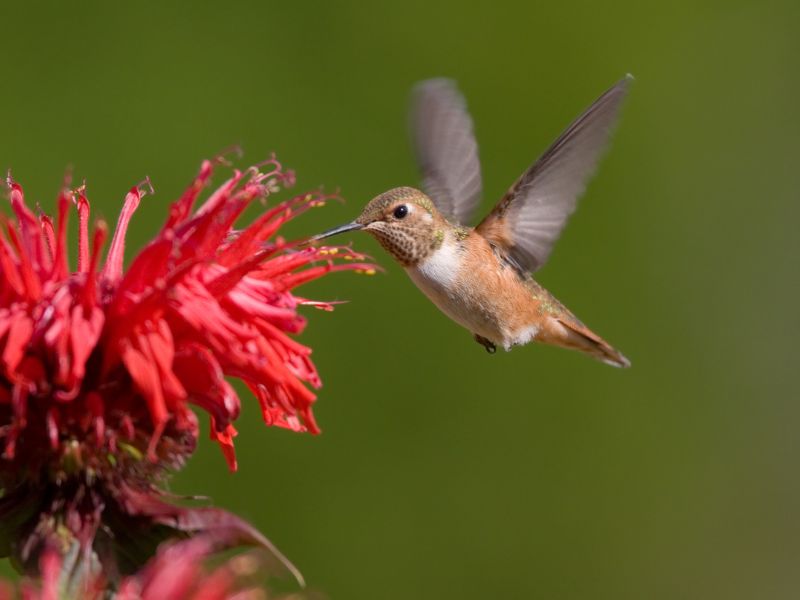
Red bee balm, also known as Monarda didyma, is a striking and eye-catching perennial plant that belongs to the mint family.
It’s popular among gardeners for its attractive and vibrant red flowers, which can also come in purple, white, and pink varieties.
The plant is well-known for attracting pollinators like bees, hummingbirds, and butterflies to your garden.
When it comes to growth, red bee balm can reach a height of 2-4 feet tall depending on the specific variety and growing conditions.
The plant’s stem is sturdy and supports an abundance of beautiful flowers that bloom from early summer to early fall, providing long-lasting color and interest in your garden.
The foliage of red bee balm is also noteworthy.
The leaves have a mint-like aroma and appear in a bright green hue, forming an attractive contrast with the vivid flowers.
When growing this plant from seed, you can expect the leaves to emerge first, followed by the development of the flowers during its blooming season.
To encourage the healthiest and most vibrant growth of your red bee balm, be sure to plant it in well-draining soil and provide it with sufficient sunlight.
The plant prefers full sun but can tolerate some light shade as well.
Additionally, red bee balm is generally low-maintenance and drought-tolerant once established.
However, it is essential to keep an eye on the plant’s moisture levels during its first year of growth to ensure the development of a strong root structure.
Attracting Wildlife
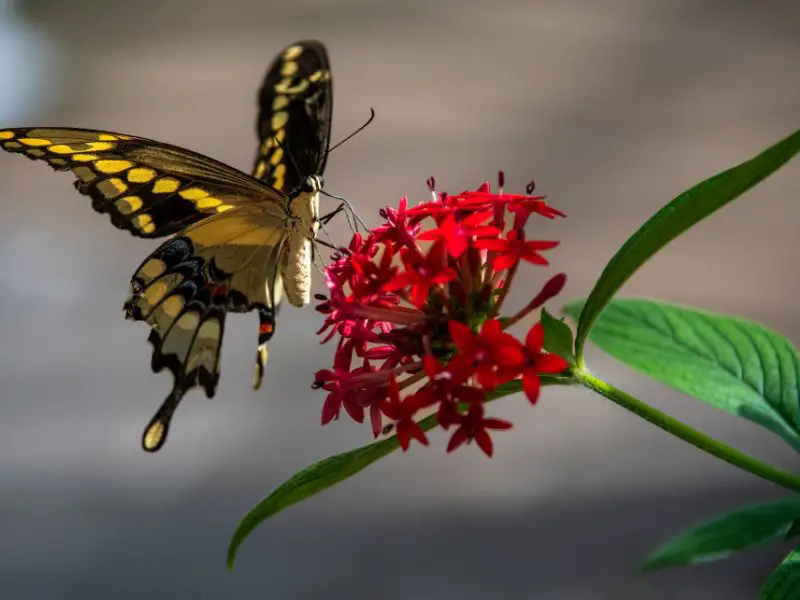
Red bee balm, also known as Monarda didyma, is an excellent choice for luring various species of wildlife to your garden, especially pollinators.
By incorporating this plant, you’ll enjoy a garden buzzing with life and color.
When your red bee balm starts blooming, you’ll notice hummingbirds flocking to its bright, tubular flowers.
These hovering creatures can’t resist the plant’s vibrant red color and nectar-rich blossoms.
As hummingbirds move from flower to flower, they inadvertently spread pollen, aiding in plant reproduction.
Bees will also be frequent visitors to your bee balm patch.
The plant’s delightful fragrance and abundant nectar supply make it an attractive stop on their pollination journey.
They will buzz around the flowers, collecting nectar and pollen for their hive.
In return, they’ll help cross-pollinate the flowers, contributing to your garden’s biodiversity.
Similarly, butterflies and other pollinating insects are drawn to the red bee balm for its colorful appearance and nectar rewards.
As they flutter around the blossoms, they also play their part in the pollination process, ensuring a healthy, thriving environment for your garden’s plants.
Even songbirds can’t resist the allure of the red bee balm.
Once the flowers have faded and turned into seed heads, these winged creatures will swoop in to feast on the seeds, giving you the added bonus of observing various bird species up close.
Resilience and Diseases
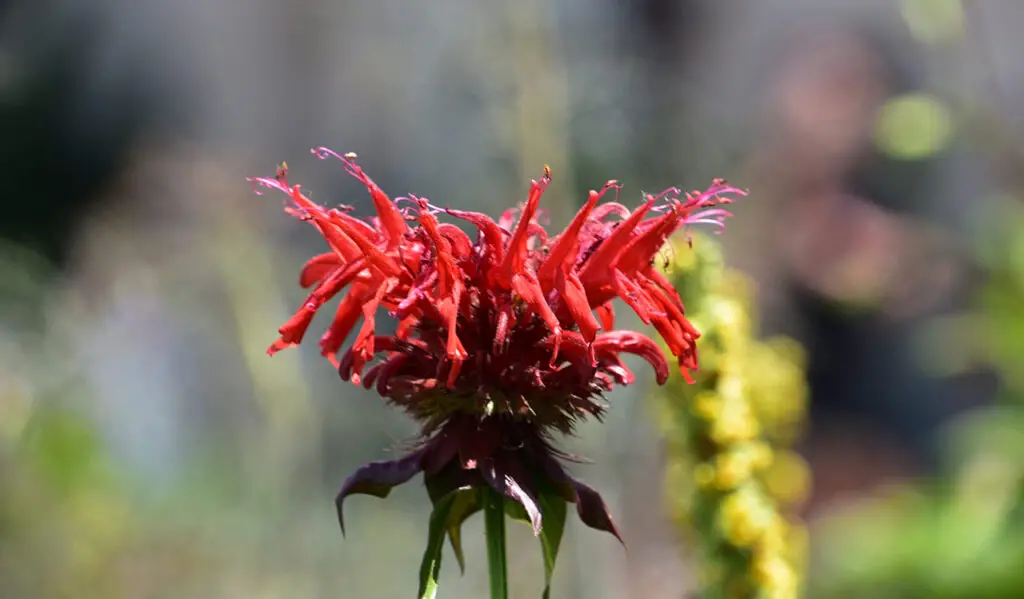
Red Bee Balm (Monarda didyma) is a beautiful perennial wildflower native to North America, known for its bright red blooms and ability to attract hummingbirds.
Like any plant, it can be susceptible to certain diseases and pests.
In this section, we’ll discuss the resilience of red bee balm and some common diseases it may encounter, particularly powdery mildew.
Powdery Mildew is a fungal disease that often affects Monarda plants, including red bee balm.
It appears as a white, powdery substance on the leaves, and can cause the plant to look dull and unhealthy.
To prevent powdery mildew, ensure your red bee balm has adequate air circulation and avoid overcrowding in your garden.
Watering at ground level may also help reduce the chances of powdery mildew forming on the leaves.
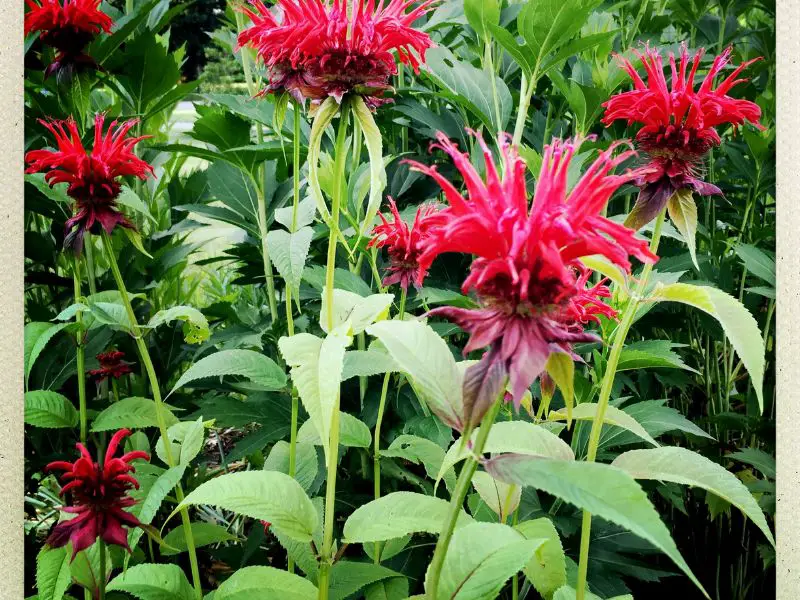
When it comes to resistance, certain varieties of red bee balm have been bred to be more resistant to diseases such as powdery mildew.
For instance, ‘Marshall’s Delight’ was found to be the most disease-resistant variety in a three-year study conducted by the University of Vermont.
If you’re planning to grow red bee balm, investing in a resistant variety may save you from potential fungal disease issues.
In addition to powdery mildew, red bee balm may also be affected by other fungal diseases.
To minimize the risk of infection, it’s important to promote overall plant health.
Ensure your plants receive enough sunlight, maintain proper soil pH, and provide adequate nutrients.
Regularly checking your plants for any signs of disease and removing affected plant parts can help prevent the spread of these diseases.
It’s essential to recognize that red bee balm plants, like all living organisms, can’t be completely immune to diseases.
Still, by taking the right preventative measures and selecting disease-resistant varieties when possible, you’ll give your plants the best chance at a healthy, thriving life.
Utilization and Benefits
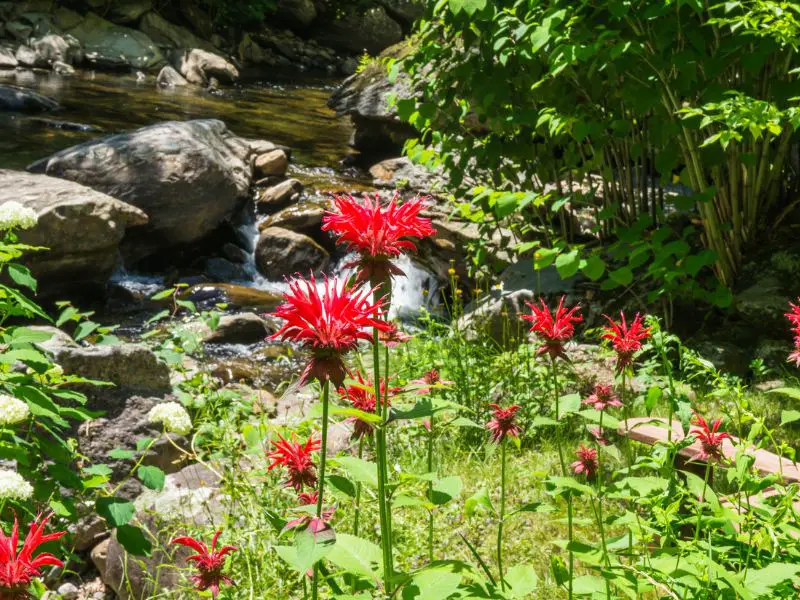
In The Kitchen
Red Bee Balm, also known as Monarda didyma, is a versatile herb that can be used in your culinary endeavors.
You can enjoy its vibrant flavor and aroma by incorporating the edible flowers and leaves into various dishes.
Here are some ideas for using red bee balm in the kitchen:
- Tea: Brew a delicious herbal tea from the fresh or dried leaves. This distinctive Oswego tea is known for its soothing properties and refreshing taste.
- Salads: Add the red bee balm flowers to your salads, providing a pop of color and a hint of minty flavor.
- Garnish: Use the eye-catching red flowers as an attractive garnish for your favorite dishes, adding a touch of flair and finesse to your presentation.
In Medicine
Aside from its culinary uses, red bee balm offers several medicinal benefits.
Here are some ways it has been traditionally used to address various ailments:
- Antispasmodic: Red bee balm has antispasmodic properties, which can help to alleviate menstrual cramps and coughs.
- Antimicrobial: The herb has been known for its antimicrobial effects, making it a useful remedy for scrapes, stings, and rashes when applied topically.
- Nervine: As a mild nervine, red bee balm provides a gentle calming effect on the nervous system, similar to lemon balm.
Remember to always consult with a medical professional before incorporating any herbs into your healthcare regimen.
While red bee balm can offer numerous benefits, it’s important to ensure it’s safe and appropriate for your specific needs.